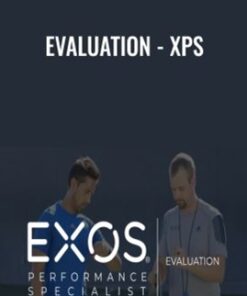CBT for Cluster B: Proven Strategies for Borderline, Narcissistic, Antisocial and Histrionic Personality Disorders – Richard Sears
Question and Answer
What is Size:?
Size: is Total.
How does Size: Total?
Total Size:
What is Lifetime?
Lifetime is Support:.
How does Lifetime Support:?
Support: Lifetime
What is Unlimited Of Course CBT?
Unlimited Of Course CBT is Download: for Cluster B: Proven Strategies for Borderline, Narcissistic, Antisocial and Histrionic Personality Disorders - Richard Sears Purchase CBT for Cluster B: Proven Strategies for Borderline, Narcissistic, Antisocial and Histrionic Personality Disorders - Richard Sears courses at here with PRICE $219.99 $92 When purchasing CBT for Cluster B: Proven Strategies for Borderline, Narcissistic, Antisocial and Histrionic Personality Disorders - Richard Sears course, You can get it with the LIFETIME SUPPORT and UNLIMITED DOWNLOAD..
How does Unlimited Of Course CBT Download:?
Download: Unlimited Of Course CBT for Cluster B: Proven Strategies for Borderline, Narcissistic, Antisocial and Histrionic Personality Disorders - Richard Sears Purchase CBT for Cluster B: Proven Strategies for Borderline, Narcissistic, Antisocial and Histrionic Personality Disorders - Richard Sears courses at here with PRICE $219.99 $92 When purchasing CBT for Cluster B: Proven Strategies for Borderline, Narcissistic, Antisocial and Histrionic Personality Disorders - Richard Sears course, You can get it with the LIFETIME SUPPORT and UNLIMITED DOWNLOAD.
What is Clients?
Clients is with Cluster B Personality Disorders (Borderline, Antisocial, Histrionic, and Narcissistic) can be amongst the most challenging for therapists..
How does Clients can be?
Clients with Cluster B Personality Disorders (Borderline, Antisocial, Histrionic, and Narcissistic) can be amongst the most challenging for therapists.
What is Clinicians?
Clinicians is who are not properly trained can inadvertently make clients worse, and can even put themselves at risk for licensure board complaints..
How does Clinicians are not properly trained can inadvertently make?
Clinicians who are not properly trained can inadvertently make clients worse, and can even put themselves at risk for licensure board complaints.
What is a deeper understanding of these disorders?
a deeper understanding of these disorders is However, when equipped with and the most effective principles and techniques, it can be extremely rewarding to witness the positive ripple effects that occur in these clients and their families..
How does a deeper understanding of these disorders equipped?
However, when equipped with a deeper understanding of these disorders and the most effective principles and techniques, it can be extremely rewarding to witness the positive ripple effects that occur in these clients and their families.
What is clinical psychologist and author,?
clinical psychologist and author, is Join Dr. Richard Sears for a compassionate yet direct approach for working with these individuals using cutting edge, practical interventions that are grounded in theory..
How does clinical psychologist and author, Join?
Join clinical psychologist and author, Dr. Richard Sears for a compassionate yet direct approach for working with these individuals using cutting edge, practical interventions that are grounded in theory.
What is this recording?
this recording is In you’ll learn: How even the most frustrating, maladaptive behaviors get conditioned and reinforced over time (and what to do about it) How to recognize and interrupt unhealthy thinking patterns Strategies to help free clients of struggles with thoughts, feelings, and unhealthy behaviors Interventions to manage stressful sessions and emotional chaos How to avoid getting pulled into a client’s “crisis of the week” drama With solid principles and detailed case examples, Dr. Sears will bring these concepts and methods to life with passion and humor, giving you practical take-aways to use in your very next therapy session!.
How does this recording learn:?
In this recording you’ll learn: How even the most frustrating, maladaptive behaviors get conditioned and reinforced over time (and what to do about it) How to recognize and interrupt unhealthy thinking patterns Strategies to help free clients of struggles with thoughts, feelings, and unhealthy behaviors Interventions to manage stressful sessions and emotional chaos How to avoid getting pulled into a client’s “crisis of the week” drama With solid principles and detailed case examples, Dr. Sears will bring these concepts and methods to life with passion and humor, giving you practical take-aways to use in your very next therapy session!
What is the four Cluster B personality disorders?
the four Cluster B personality disorders is Differentiate diagnostically between to accurately inform the treatment planning process..
How does the four Cluster B personality disorders Differentiate diagnostically?
Differentiate diagnostically between the four Cluster B personality disorders to accurately inform the treatment planning process.
What is self-sabotage,?
self-sabotage, is Manage maladaptive, manipulation, and negative attention seeking behaviors in clients to improve client level of functioning..
How does self-sabotage, Manage?
Manage maladaptive, self-sabotage, manipulation, and negative attention seeking behaviors in clients to improve client level of functioning.
What is treatment interventions?
treatment interventions is Utilize based in cognitive approaches, including ABC records, challenging distortions, and Socratic dialogue for clients diagnosed with personality disorders..
How does treatment interventions Utilize?
Utilize treatment interventions based in cognitive approaches, including ABC records, challenging distortions, and Socratic dialogue for clients diagnosed with personality disorders.
What is Employ mindfulness-?
Employ mindfulness- is based interventions to increase client’s psychological flexibility and decrease emotional intensity..
How does Employ mindfulness- increase?
Employ mindfulness-based interventions to increase client’s psychological flexibility and decrease emotional intensity.
What is potential clinical issues?
potential clinical issues is Evaluate and address including crisis management, countertransference, boundary setting, and self-care to improve clinical outcomes..
How does potential clinical issues Evaluate?
Evaluate and address potential clinical issues including crisis management, countertransference, boundary setting, and self-care to improve clinical outcomes.
What is three strategies?
three strategies is Distinguish to improve client engagement and stay present in session..
How does three strategies Distinguish?
Distinguish three strategies to improve client engagement and stay present in session.
What is You?
You is What Need to Know about Cluster B Diagnoses and Approaches Key features, diagnostic criteria, and differential diagnosis considerations Borderline Personality Disorder Narcissistic Personality Disorder Antisocial Personality Disorder Histrionic Personality Disorder Top indicators of PD not in the DSM-5® 5 things you probably never knew about Cluster B personality disorders Unique treatment considerations Behavior – Approach Maladaptive Behavior, Self-Sabotage, Manipulation, and Attention Seeking How to shift behaviors that have been conditioned over a lifetime Disrupting reinforcement 5 things you may be doing that inadvertently reinforce maladaptive behavior and what to do instead Practical application of classical and operant conditioning concepts Roots of behavioral therapy and why it matters in treatment Psychoeducation: Increase clients’ insight into how their behavior is reinforced Exposure techniques: Build distress tolerance and momentum toward healthier choices Chain analysis: Decrease hopelessness, improve awareness, and identify precipitating factors and choice points Case study – Sam, The Man Who Blames Everyone Else Cognitive – Recognize and Interrupt Unhealthy Thinking Patterns Interventions to overcome the experience of negative emotion and negative beliefs about treatment Strategies to adapt cognitive techniques for Cluster B personality disorders ABC records Challenging Beliefs Worksheets Socratic dialogue Common cognitive distortions Why challenging your client’s thoughts can make things worse and what to do instead Case study – Martha, The Woman Who Confused her Thoughts and Memories with Reality Mindfulness and Acceptance – Breaking Free of Distressing Thoughts, Feelings, and Behaviors Cognitive and behavioral mechanisms Increase psychological flexibility Decrease emotional intensity Focus on the bigger picture Mistakes with mindfulness – inadvertently encouraging avoidance How to adapt mindfulness and acceptance techniques for Cluster B Cognitive defusion: Stepping back from thoughts Acceptance: Letting go of control Mindfulness: Fostering the ability to stay present Observing the self: Developing a bigger sense of who you are Identifying values: Finding the “why” Taking committed action Case study – Arthur, The Loving, Self-Centered Father Clinical Considerations for Working with Personality Disorder Clients Crisis management Suicidal ideation/gestures, self-injury Create a clear plan to keep clients safe and avoid personal liability What to avoid – documentation considerations and more 5 warning signs you need to check your boundaries Minimize boundary violations and avoid false reporting to licensure board Strategies to recognize and address countertransference Top 3 tips for staying present in session Balance boundaries with compassion Model presence with distress, not joining the emotional chaos Internal messages – Not getting sucked in Exercise: People that bother me Are you interested in?.
How does You features,?
What You Need to Know about Cluster B Diagnoses and Approaches Key features, diagnostic criteria, and differential diagnosis considerations Borderline Personality Disorder Narcissistic Personality Disorder Antisocial Personality Disorder Histrionic Personality Disorder Top indicators of PD not in the DSM-5® 5 things you probably never knew about Cluster B personality disorders Unique treatment considerations Behavior – Approach Maladaptive Behavior, Self-Sabotage, Manipulation, and Attention Seeking How to shift behaviors that have been conditioned over a lifetime Disrupting reinforcement 5 things you may be doing that inadvertently reinforce maladaptive behavior and what to do instead Practical application of classical and operant conditioning concepts Roots of behavioral therapy and why it matters in treatment Psychoeducation: Increase clients’ insight into how their behavior is reinforced Exposure techniques: Build distress tolerance and momentum toward healthier choices Chain analysis: Decrease hopelessness, improve awareness, and identify precipitating factors and choice points Case study – Sam, The Man Who Blames Everyone Else Cognitive – Recognize and Interrupt Unhealthy Thinking Patterns Interventions to overcome the experience of negative emotion and negative beliefs about treatment Strategies to adapt cognitive techniques for Cluster B personality disorders ABC records Challenging Beliefs Worksheets Socratic dialogue Common cognitive distortions Why challenging your client’s thoughts can make things worse and what to do instead Case study – Martha, The Woman Who Confused her Thoughts and Memories with Reality Mindfulness and Acceptance – Breaking Free of Distressing Thoughts, Feelings, and Behaviors Cognitive and behavioral mechanisms Increase psychological flexibility Decrease emotional intensity Focus on the bigger picture Mistakes with mindfulness – inadvertently encouraging avoidance How to adapt mindfulness and acceptance techniques for Cluster B Cognitive defusion: Stepping back from thoughts Acceptance: Letting go of control Mindfulness: Fostering the ability to stay present Observing the self: Developing a bigger sense of who you are Identifying values: Finding the “why” Taking committed action Case study – Arthur, The Loving, Self-Centered Father Clinical Considerations for Working with Personality Disorder Clients Crisis management Suicidal ideation/gestures, self-injury Create a clear plan to keep clients safe and avoid personal liability What to avoid – documentation considerations and more 5 warning signs you need to check your boundaries Minimize boundary violations and avoid false reporting to licensure board Strategies to recognize and address countertransference Top 3 tips for staying present in session Balance boundaries with compassion Model presence with distress, not joining the emotional chaos Internal messages – Not getting sucked in Exercise: People that bother me Are you interested in?
What is narcissistic personality disorder;?
narcissistic personality disorder; is narcissistic number; narcissistic cannibal; narcissistic definition; narcissistic disorder Purchasing CBT for Cluster B: Proven Strategies for Borderline, Narcissistic, Antisocial and Histrionic Personality Disorders - Richard Sears course now, You can get it with the LIFETIME SUPPORT and UNLIMITED DOWNLOAD..
How does narcissistic personality disorder; can get?
narcissistic personality disorder; narcissistic number; narcissistic cannibal; narcissistic definition; narcissistic disorder Purchasing CBT for Cluster B: Proven Strategies for Borderline, Narcissistic, Antisocial and Histrionic Personality Disorders - Richard Sears course now, You can get it with the LIFETIME SUPPORT and UNLIMITED DOWNLOAD.
What is CBT?
CBT is Purchase for Cluster B: Proven Strategies for Borderline, Narcissistic, Antisocial and Histrionic Personality Disorders - Richard Sears courses at here with PRICE $219.99 $92.
How does CBT Purchase?
Purchase CBT for Cluster B: Proven Strategies for Borderline, Narcissistic, Antisocial and Histrionic Personality Disorders - Richard Sears courses at here with PRICE $219.99 $92
 1 Lead A Day - Bryan Kreuzberger
1 × $103.00
1 Lead A Day - Bryan Kreuzberger
1 × $103.00 10 Best-Ever Anxiety Treatment Techniques - Margaret Wehrenberg
1 × $164.00
10 Best-Ever Anxiety Treatment Techniques - Margaret Wehrenberg
1 × $164.00 CSW 2012 Camp - Erik Paulson
1 × $33.00
CSW 2012 Camp - Erik Paulson
1 × $33.00 Evaluation - XPS
1 × $45.00
Evaluation - XPS
1 × $45.00 Certificate Course in Cognitive Behavioral Therapy for Insomnia (CBT-I): Evidence-based Insomnia Interventions for Trauma, Anxiety, Depression, Chronic Pain, & more - Colleen E. Carney & Meg Danforth
1 × $125.00
Certificate Course in Cognitive Behavioral Therapy for Insomnia (CBT-I): Evidence-based Insomnia Interventions for Trauma, Anxiety, Depression, Chronic Pain, & more - Colleen E. Carney & Meg Danforth
1 × $125.00 100K Factory Revolution 2017 – Aidan Booth and Steve Clayton
1 × $140.00
100K Factory Revolution 2017 – Aidan Booth and Steve Clayton
1 × $140.00 2-Day: Bulletproof Summit: A Movement Experience
1 × $180.00
2-Day: Bulletproof Summit: A Movement Experience
1 × $180.00 10x Wealth and Business New – Brendon Burchard
1 × $123.00
10x Wealth and Business New – Brendon Burchard
1 × $123.00 Copywriting For Creatives - Ashlyn Carter
1 × $24.00
Copywriting For Creatives - Ashlyn Carter
1 × $24.00 2-Day Advanced Course: Executive Functioning Skills for Children & Adolescents...- Lynne Kenney
1 × $180.00
2-Day Advanced Course: Executive Functioning Skills for Children & Adolescents...- Lynne Kenney
1 × $180.00 Addressing Patient Behavior by Brain Lesion Site: Clinical Tools and Strategies Specific to Patient Deficits - Jerome Quellier
1 × $85.00
Addressing Patient Behavior by Brain Lesion Site: Clinical Tools and Strategies Specific to Patient Deficits - Jerome Quellier
1 × $85.00 “Email Response Warrior + Email Inbox Warrior” – Jason Henderson
1 × $78.00
“Email Response Warrior + Email Inbox Warrior” – Jason Henderson
1 × $78.00 Attachment in Adults: How Infant Attachment Security Affects Adult Relationships - Onno van der Hart , Linda Curran , Mary Lou Schack & ...
1 × $38.00
Attachment in Adults: How Infant Attachment Security Affects Adult Relationships - Onno van der Hart , Linda Curran , Mary Lou Schack & ...
1 × $38.00 MyBeliefworks for Changing Beliefs About Work, Job, Career - Jimmy Mack
1 × $34.00
MyBeliefworks for Changing Beliefs About Work, Job, Career - Jimmy Mack
1 × $34.00 10x Facebook Ads – Joanna Wiebe
1 × $123.00
10x Facebook Ads – Joanna Wiebe
1 × $123.00 "Male Physique Training Templates" - Renaissance Periodization
1 × $42.00
"Male Physique Training Templates" - Renaissance Periodization
1 × $42.00 Complete Ericksonian Hypnosis – Beginners course
1 × $80.00
Complete Ericksonian Hypnosis – Beginners course
1 × $80.00 1 Hour SEO | Become a Technical Marketer
1 × $40.00
1 Hour SEO | Become a Technical Marketer
1 × $40.00 Anik Singal - FB Ad Academy
1 × $133.00
Anik Singal - FB Ad Academy
1 × $133.00 'Quantum' Chakra Clearing and Balancing Series - Jonette Crowley
1 × $52.00
'Quantum' Chakra Clearing and Balancing Series - Jonette Crowley
1 × $52.00 10 Steps to Learn Anything Quickly – John Sonmez
2 × $30.00
10 Steps to Learn Anything Quickly – John Sonmez
2 × $30.00 Managing Patient Emergencies: Critical Care Skills Every Nurse Must Know - Dr. Paul Langlois
1 × $85.00
Managing Patient Emergencies: Critical Care Skills Every Nurse Must Know - Dr. Paul Langlois
1 × $85.00 Alan Cowgill - Private Lending Made Easy Premium System
1 × $89.00
Alan Cowgill - Private Lending Made Easy Premium System
1 × $89.00 12 Minute Stage Crazy - Body of a Rock Star
1 × $22.00
12 Minute Stage Crazy - Body of a Rock Star
1 × $22.00 21 Day Inner Healing Journey - Jimmy Evans
1 × $20.00
21 Day Inner Healing Journey - Jimmy Evans
1 × $20.00 Adam Linkenauger - Video Traffic System with OTO
1 × $61.00
Adam Linkenauger - Video Traffic System with OTO
1 × $61.00 Code 2 Conversions - Chris Rocheleau
1 × $135.00
Code 2 Conversions - Chris Rocheleau
1 × $135.00 8x Hero Academy – Alex Becker
1 × $94.00
8x Hero Academy – Alex Becker
1 × $94.00 Brian Tracy - The 6-Figure Speaker Virtual Training Course
1 × $52.00
Brian Tracy - The 6-Figure Speaker Virtual Training Course
1 × $52.00 Teach Yourself - Vietnamese
1 × $17.00
Teach Yourself - Vietnamese
1 × $17.00 Effortless Optimal Weight & Health Program - Morry Zelcovitch
1 × $72.00
Effortless Optimal Weight & Health Program - Morry Zelcovitch
1 × $72.00 $300 a day YouTube Affiliate Marketing Blueprint - Hunter Edwards
1 × $43.00
$300 a day YouTube Affiliate Marketing Blueprint - Hunter Edwards
1 × $43.00 Gina DeVee - Life Purpose Project LIVE
1 × $75.00
Gina DeVee - Life Purpose Project LIVE
1 × $75.00 Dan On Demand - Dan Lok
Dan On Demand - Dan Lok
 Insight - The Principles of a Fulfilling & High-Performance Life
Insight - The Principles of a Fulfilling & High-Performance Life
 10 Steps to Greater Confidence and Self-Esteem - Alexis Meads
10 Steps to Greater Confidence and Self-Esteem - Alexis Meads
 101 Practical Strategies for the Treatment of GAD, Panic, OCD, Social Anxiety Disorder, Phobias and Insomnia - Jennifer L. Abel
101 Practical Strategies for the Treatment of GAD, Panic, OCD, Social Anxiety Disorder, Phobias and Insomnia - Jennifer L. Abel
 Anxiety and Depression Online Conference: Evidence-based treatments for powerful change - Jennifer L. Abel , Judy Belmont , Margaret Wehrenberg , Mary NurrieStearns & Reid Wilson
Anxiety and Depression Online Conference: Evidence-based treatments for powerful change - Jennifer L. Abel , Judy Belmont , Margaret Wehrenberg , Mary NurrieStearns & Reid Wilson